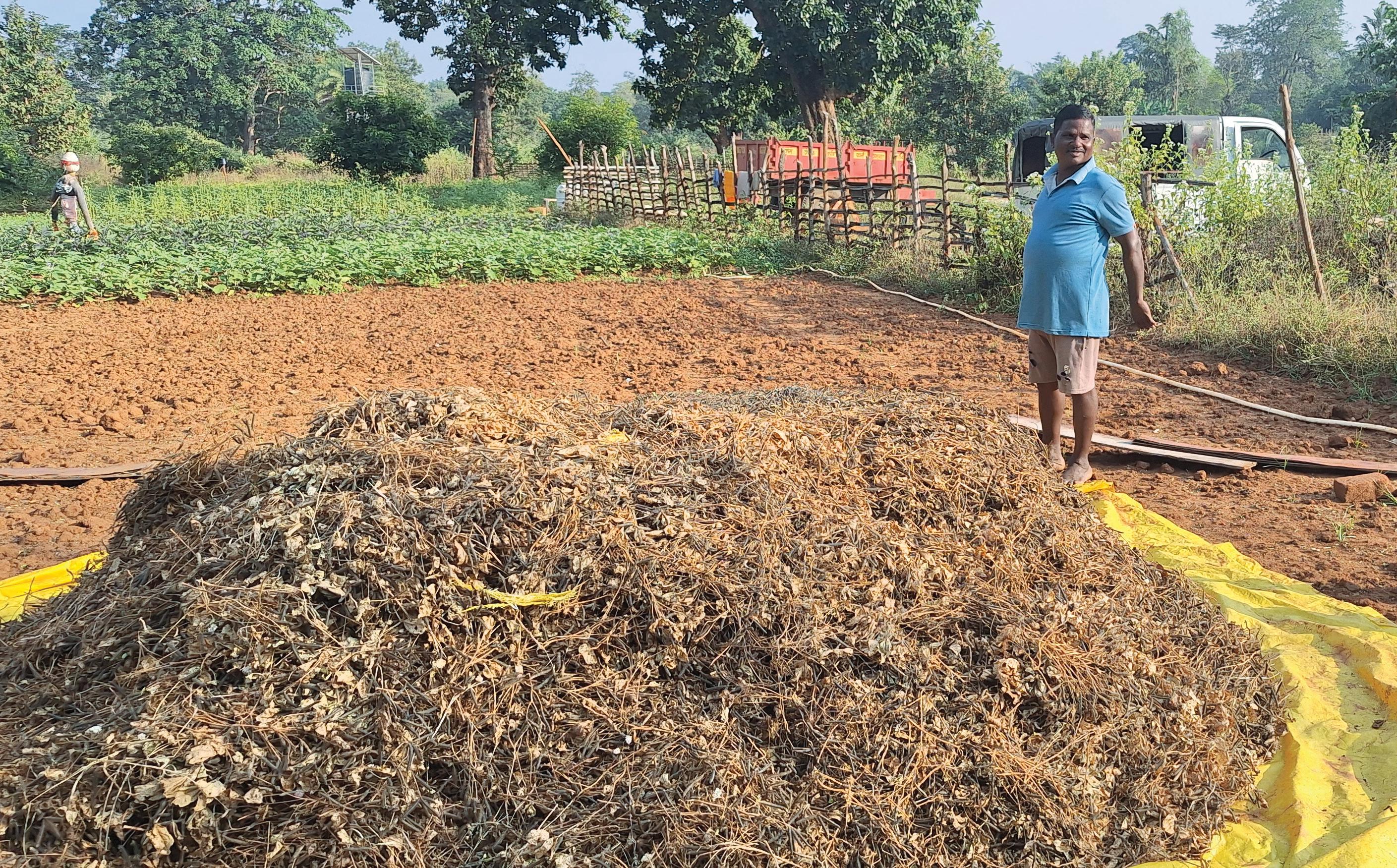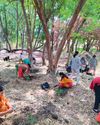Organic move

CHANNU KUNJAM recalls the advice his father gave him when he took up farming 13 years ago: "Chemicals will ruin our land." The resident of Aalnar village in Chhattisgarh's Dantewada district says his family has always practised organic farming, relying on dried leaves and cow dung. A decade ago, Kunjam, who owns 2.54 hectares (ha), started preparing jeevamrit, a fertiliser made using ingredients available at home and in the fields. "We need cow dung and urine, jaggery, gram flour and soil to make jeevamrit. We leave it for seven days before using it on the field," says Kunjam.
Rita Modiyam, a farmer from Masoodi village in the same district, says the use of jeevamrit has helped improve the productivity of her farm. "I was a subsistence farmer a decade ago. Today I grow enough crops to feed my family and sell at least 20 quintals (2,000 kg) of paddy and a variety of vegetables," says Modiyam.
Kunjam and Modiyam are among the over 10,000 farmers in 110 villages of Dantewada who have received organic certification under the Large Area Certification (LAC) scheme in 2023-24. Launched in 2020-21, LAC is a Union government initiative to certify large contiguous areas such as hills, islands, or desert belts that have been traditionally organic. It is part of the Participatory Guarantee System-India, an organic certification framework introduced in 2011. Until now, only Ladakh (5,000 ha) and Lakshadweep (2,700 ha) had received LAC certification. With the 110 villages, which have 65,000 ha of farm area, Chhattisgarh has become the first state to have area certified under LAC.
COMBINED EFFORT
Bu hikaye Down To Earth dergisinin February 16, 2025 sayısından alınmıştır.
Start your 7-day Magzter GOLD free trial to access thousands of curated premium stories, and 9,000+ magazines and newspapers.
Already a subscriber ? Giriş Yap
Bu hikaye Down To Earth dergisinin February 16, 2025 sayısından alınmıştır.
Start your 7-day Magzter GOLD free trial to access thousands of curated premium stories, and 9,000+ magazines and newspapers.
Already a subscriber? Giriş Yap

Invisibilised localities
AN ETHNOGRAPHIC STUDY ON THE NETWORKS, CULTURAL TRADITIONS AND OBSTACLES FACED BY RESIDENTS OF JHUGGIS AND TRANSIT CAMPS WHILE DEALING WITH EVICTION POLITICS AND INEQUALITIES IN DELHI

TUNNEL VISION
Bengaluru's civic body must ascertain suitability of the city's geology before moving ahead with its tunnel road project for seamless travel

SAFETY IN CIRCULARITY
Global standards of water availability show that India is water stressed. Reusing treated wastewater can augment water supply while solving the problem of its safe disposal. FARAZ AHMAD and SUMITA SINGHAL analyse wastewater management practices of 16 cities in seven states to understand the challenges and potential areas of reuse

AGAINST THE GRAIN
India's two most valuable timbers-sandalwood and red sanders-have long been bound by restrictive regulations designed to curb illegal trade. Encouraged by the government decades ago with promises of windfall profits, farmers took to commercial cultivation, investing years of patience and effort. Now, as they prepare to harvest, a harsh reality is setting in-the promise of big profits is not quite holding up. HIMANSHU NITNAWARE travels to 19 villages across Karnataka, Andhra Pradesh and Telangana to explore the reasons

Guardians of forest
Communities across Maharashtra take on the mantle of biodiversity conservation; replicate sacred groves on common land

Climate talks
Anil Agarwal Dialogue 2025 sees discussions on the state of India's environment, energy ambitions and emerging health threats

Mission for inclusion
Vidya Rajput leads the fight for transgender community's rights and acceptance in Chhattisgarh

Ready for power shift
An unprecedented drought forces hydropower- dependent Zambia to diversify its energy portfolio, embrace solar power

THE GREAT FARM HUSTLE
Agroforestry is fast emerging as a win-win strategy to mitigate climate change and improve farmers' income. It is particularly so in India, home to one-fifth of the agroforestry carbon projects in the world. Over the past months ROHINI KRISHNAMURTHY has travelled to almost 20 villages across the country to understand how this market works. At all locations, she finds that communities and their land and labour are central to the projects. But they do not always benefit from the carbon revenue

CAN AGROFORESTRY CREDITS BE SAVED?
Ensure that farmers benefit from the carbon revenue and stay protected against market failure
